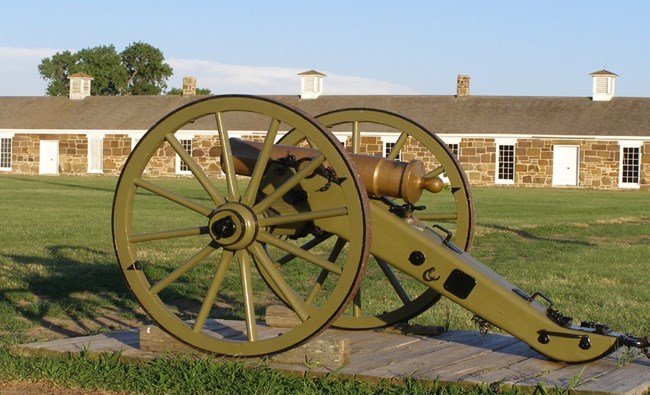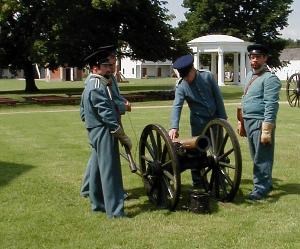Last updated: November 23, 2020
Article
The 1841 Mountain Howitzer
A New Kind of Weapon

Getting the Carriage Just Right
All the Mountain Howitzers used the same bronze tube, but it took some experimentation to get the carriage just right. The first version of the M-1841, was the Pack Model, which could be transported on three horses after being taken apart. The second version mounted the tube on what was called the Prairie Carriage, which could be pulled by horses into the field. Its wider axel was more stable than the narrow axel of the pack model. The last model was called the Second Prairie Carriage and differed slightly from the first. It became the mainstay of the Indian Wars until replaced by breech loading guns like the Hotchkiss Mountain Gun.
The Second Prairie Carriage is the one most often seen in museums and National Parks throughout the U.S.
Nicknames for Everyone

NPS Photo
Most of the military posts in the west had Mountain Howitzers. Fort Larned had four on their inventory in 1868. Not many of these remote posts had trained trained artillerymen assigned to them so Infantry and Cavalry men were crosstrained to operate the Howitzer. This earned them the colorful moniker “instant artillery”, a term not meant to be flattering.
During the Civil War the Howitzer earned the nickname of the Bulldog, giving the impression it would not back down from a fight. The Indians also had a nickname for it: “The Gun that Booms Twice,” referring to the fact that Spherical Case shot exploded a certain distance after it was fired, causing another explosion after the initial one that launched the round. Think of it as a hand grenade you could throw approximately seven hundred yards.
